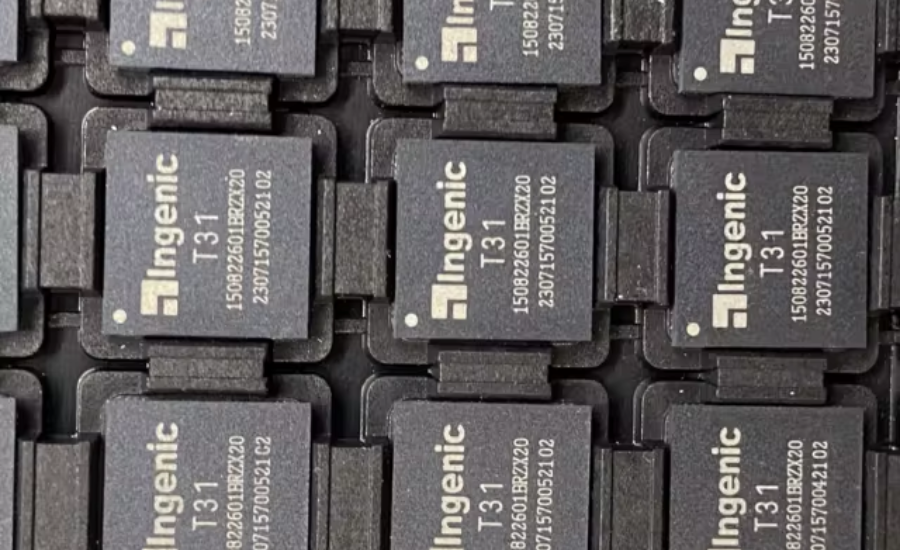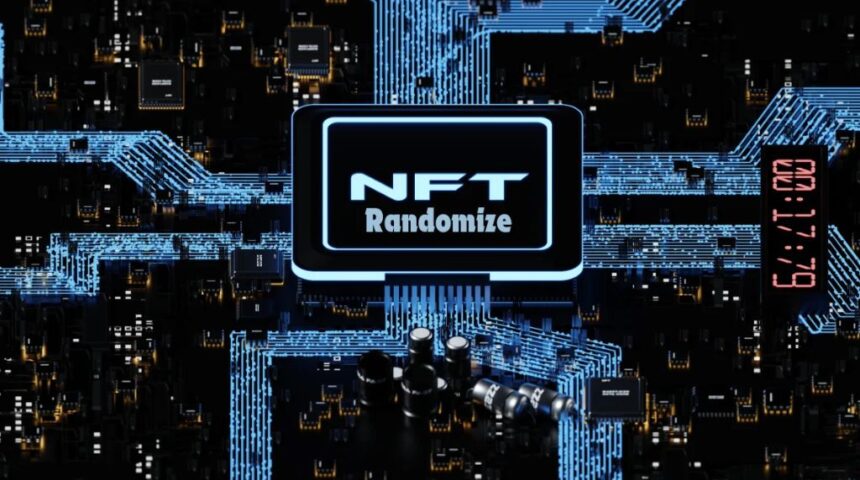In the evolving world of finance, new mechanisms continually emerge to address complex market dynamics. One such innovation gaining traction is the Naomi Swap. This financial instrument offers a fresh way to manage risk and enhance liquidity across various markets. In this article, we will explore the essence of Naomi Swaps, how they work, their practical uses, and the broader impacts on the financial ecosystem.
What Exactly is a Naomi Swap?
A Naomi Swap is a financial derivative that allows two parties to exchange cash flows or other financial instruments under predetermined terms. Typically, these swaps involve the exchange of currencies, interest rates, or commodities. The mechanism behind Naomi Swaps is designed to manage financial risks, such as market volatility, while also offering opportunities for speculative profits based on anticipated market movements. Naomi Swaps play a critical role in providing businesses, institutions, and investors with an avenue to navigate market uncertainties and manage exposure to fluctuating asset prices or interest rates.
Key Components of a Naomi Swap
A Naomi Swap agreement involves several key components that define how the transaction operates and what is exchanged between the two parties. Understanding these elements is crucial for grasping the mechanics and purpose of such swaps.
1. Parties Involved: The “Payer” and the “Receiver”
The Naomi Swap contract involves two primary participants:
- The Payer: This party agrees to make a series of cash flow payments based on the terms of the swap.
- The Receiver: This participant agrees to make their own set of cash flow payments, often calculated differently from the payer’s payments.
Each party assumes a specific financial obligation in the agreement, and they exchange these obligations to balance risk or gain from changes in market conditions, such as interest rates or exchange rates.
2. Notional Amount: A Reference Figure
The notional amount refers to a hypothetical principal value used to calculate the cash flows exchanged between the two parties. Importantly, the notional amount itself is not physically exchanged between the parties; it serves as a reference point. The calculations for the periodic payments are based on this amount, but no money changes hands directly for the notional value. It’s used solely to determine the size and frequency of the cash flow exchanges.
The notional amount allows for standardized transactions that enable both parties to manage their exposure without requiring significant upfront capital.
3. Maturity Date: The Final Settlement Point
Every Naomi Swap has a maturity date, which is the agreed-upon point at which the contract reaches its conclusion. At this time, any final exchange of cash flows takes place. The maturity date is important because it determines when the swap’s terms are fulfilled, and it is often chosen based on the specific goals and risk timelines of both parties.
The length of time until the maturity date can vary, depending on the structure of the swap, ranging from a few months to several years. The maturity date is critical for managing the timeline of risk exposure or potential returns.
Types of Cash Flow Structures in Naomi Swaps
Naomi Swaps can have varying cash flow structures depending on the underlying market variables and the preferences of the participants. The two most common cash flow structures are based on interest rates or the exchange of commodities, which differ in their calculation and risk exposure.
1. Interest Rate-Based Swaps
In many Naomi Swaps, the cash flows are tied to interest rates. These rates can either be fixed or floating.
- Fixed Rate: One party agrees to make payments based on a fixed interest rate, regardless of how the market interest rates fluctuate.
- Floating Rate: The cash flows are based on a variable interest rate, usually tied to a financial benchmark like LIBOR (London Interbank Offered Rate), SOFR (Secured Overnight Financing Rate), or another index. The floating rate changes based on the movement of the benchmark, thus introducing potential variability in the cash flows.
2. Commodity-Based Swaps
Another common type of Naomi Swap involves the exchange of commodity prices, such as oil, gold, or agricultural products. In these swaps, one party agrees to pay cash flows based on the price of the commodity over a specified period, while the other party pays based on an agreed-upon rate or index for the commodity in question.
These commodity swaps allow participants to hedge against price volatility in the underlying assets and provide a means of diversification within portfolios.
Purpose of Naomi Swaps: Risk Mitigation and Speculation
Naomi Swaps are designed to serve two primary purposes: risk management and speculation.
1. Risk Management and Hedging
One of the main uses of Naomi Swaps is for risk management. Companies and financial institutions use these swaps to mitigate exposure to market volatility. For instance, businesses that rely on fluctuating currency exchange rates or interest rates can use Naomi Swaps to stabilize their financial positions.
- Hedging Currency Fluctuations: A company with international operations may enter into a Naomi Swap to exchange foreign currency cash flows, thereby protecting against exchange rate fluctuations.
- Interest Rate Hedging: A business or investor with floating-rate debt may use a swap to convert it into a fixed-rate obligation, which can help provide predictability in future debt servicing costs.
2. Speculation and Profit Generation
In addition to hedging, Naomi Swaps are often used for speculation. Financial institutions and individual traders may enter into swap agreements to profit from their predictions about future market movements. For example, a trader might speculate on interest rate movements, entering into a swap contract with the expectation that rates will change in a way that benefits them.
These speculative strategies introduce additional liquidity to the financial markets but also increase their complexity, as traders attempt to anticipate and capitalize on market shifts.
How Do Naomi Swaps Work?
The operation of a Naomi Swap hinges on several financial principles, including risk assessment, valuation, and settlement.
Counterparty Risk
As with any swap agreement, a key concern is counterparty risk—the possibility that one party fails to meet their financial obligations. This risk can be mitigated by requiring collateral or thorough due diligence to assess the financial health of the parties involved.
Valuation of Naomi Swaps
To determine the value of a Naomi Swap, professionals calculate the present value of future cash flows, considering factors such as market trends, interest rates, and the creditworthiness of the involved parties. Financial models are typically used to ensure an accurate assessment.
Settlement Procedures
Naomi Swaps may be settled in two primary ways:
- Physical Settlement: Actual assets are exchanged at maturity.
- Cash Settlement: Only the net cash value of the swap is exchanged, simplifying the process.
Key Applications of Naomi Swaps
Naomi Swaps have versatile applications across various sectors, benefiting risk management, portfolio diversification, and speculative strategies.
Managing Risk
A primary function of Naomi Swaps is risk management. For instance, businesses and financial institutions use these swaps to mitigate risks associated with interest rate or currency fluctuations. A company with variable-rate debt might swap to a fixed rate to secure more predictable financial obligations.
Enhancing Portfolio Diversification
Investors can use Naomi Swaps to diversify their portfolios by exchanging different financial instruments, which helps adjust exposure to changing market conditions and reduces overall risk.
Speculation
In addition to risk management, Naomi Swaps offer opportunities for speculative trading. Traders may enter swap contracts based on anticipated market movements, potentially yielding significant profits. This speculative activity can introduce increased market volatility as participants adjust positions in response to new developments.
Broader Impact of Naomi Swaps on Financial Markets
The rise of Naomi Swaps has notable implications for both traditional and modern finance. Here are some of the broader effects:
Boosting Liquidity
By facilitating the easy exchange of cash flows between parties, Naomi Swaps improve liquidity in financial markets. This enhanced access to derivatives helps stabilize markets, particularly during periods of economic uncertainty.
Increasing Market Complexity
Though beneficial, Naomi Swaps add complexity to the financial landscape. As more market participants engage with these instruments, the interconnectedness of various financial products grows, potentially raising systemic risks that require careful monitoring and regulation.
Regulatory Considerations
Given the growing use of derivatives like Naomi Swaps, regulators are increasingly scrutinizing their impact on market stability. Transparency in reporting and robust risk management practices are crucial for ensuring that these instruments do not contribute to broader financial instability. As regulatory frameworks evolve, market participants must adapt to ensure compliance with new standards.
The Future of Naomi Swaps
As the financial sector continues to innovate, instruments like Naomi Swaps are likely to become more prominent in managing risk, optimizing portfolios, and enabling speculative opportunities. Their flexibility and ability to transfer risk position them as key tools for the future of finance.
Understanding Naomi Swaps is essential for those involved in financial markets, whether for professional risk management, investment strategies, or speculating on future trends. As market conditions evolve, the role of Naomi Swaps will likely expand, shaping the way financial transactions are conducted globally.
Short FAQs about Naomi Swaps
Q: What is a Naomi Swap?
A: A Naomi Swap is a financial contract where two parties exchange cash flows based on specific conditions, often involving currencies, interest rates, or commodities.
Q: How do they work?
A: Two parties agree to exchange payments based on a notional amount, with terms involving fixed or floating interest rates, and a maturity date for settlement.
Q: What are they used for?
A: They are used for risk management, speculation, and portfolio diversification.
Q: What is counterparty risk?
A: It’s the risk that one party may fail to fulfill their obligations in the swap.
Q: How are they settled?
A: They can be settled either by exchanging actual assets (physical settlement) or by exchanging cash flows (cash settlement).
Conclusion
Naomi Swaps represent a powerful financial tool, offering flexibility in managing risk, diversifying portfolios, and enabling speculative opportunities. By allowing two parties to exchange cash flows based on predetermined conditions, they help navigate the complexities of fluctuating markets, whether through interest rates, currencies, or commodities. However, like all financial derivatives, Naomi Swaps come with inherent risks, particularly counterparty risk, which requires careful consideration and management. As these swaps continue to gain prominence in the financial landscape, their role in enhancing market liquidity and providing risk management solutions will likely grow, shaping the future of financial transactions.












